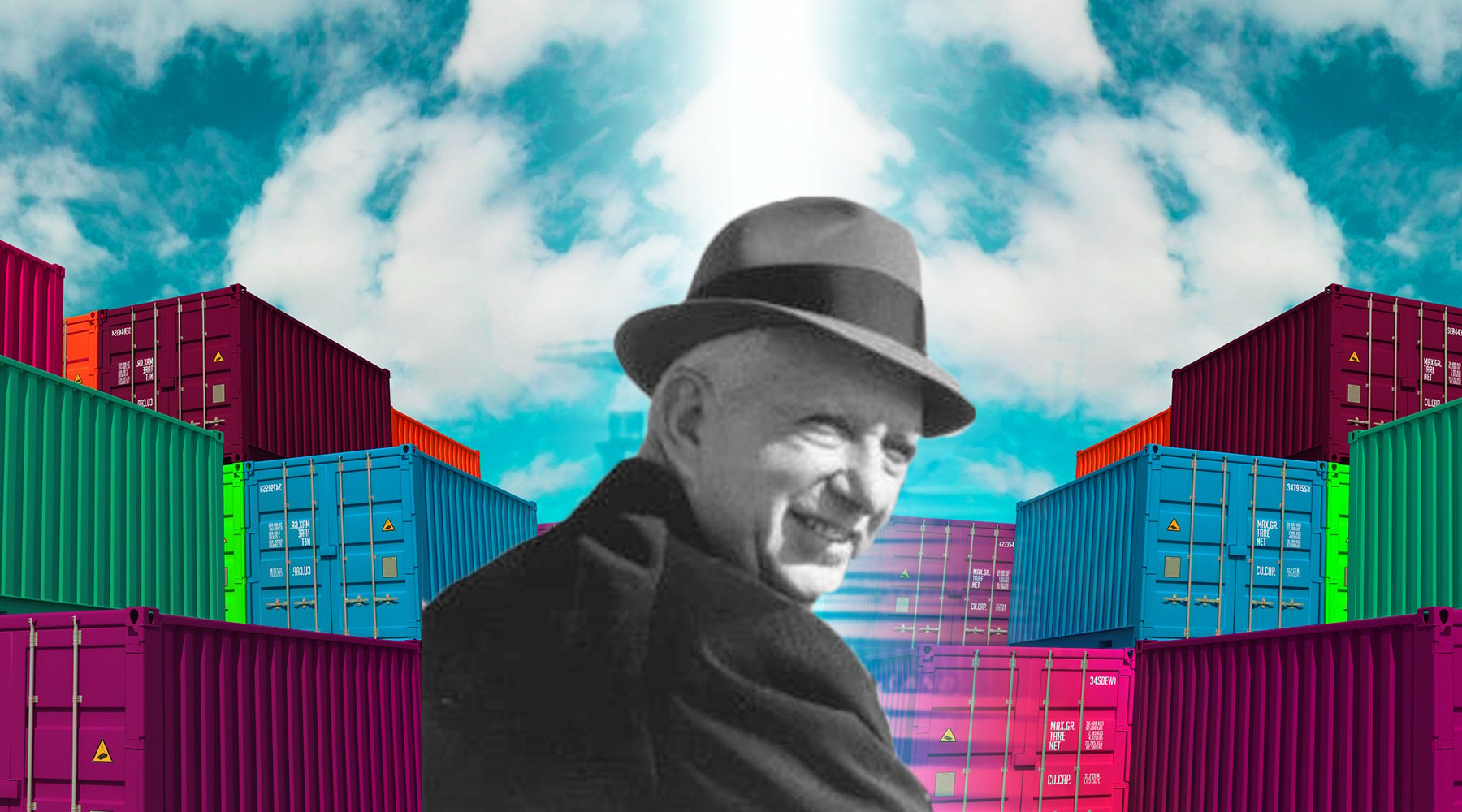The birth of containerization
Transport and international trade became revolutionized in the second half of the twentieth century as a result of the intuitive brainchild of a transport entrepreneur and American businessman – Malcolm Purcell McLean (November 14, 1913 – May 25, 2001)

Identified benefits
McLean recognized that the implementation of containerization would lead to significant reductions in the cost of freight transportation as a result of eliminating the necessity for handling cargo as individual items. Utilizing the benefits of containerization, lead to:
- improved reliability
- reductions in theft and loss
- reduced inventory costs
- shortened transportation times

Historically
Back in 1956, most cargoes got loaded and unloaded manually and individually by longshoremen. At that time, loading a vessel by hand cost $5.86 a ton. The implementation of containers reduced costs enormously – reducing them down significantly to 16 cents per ton, a 36-fold saving, and also the time it took to perform this previously time-consuming manual process.
 Dockers loading bagged cargo – MS Rothenstein NDL, Port Sudan in 1960 | CC BY-SA 3.0 — Buonasera | Source: Wikipedia
Dockers loading bagged cargo – MS Rothenstein NDL, Port Sudan in 1960 | CC BY-SA 3.0 — Buonasera | Source: Wikipedia
The container market was slow to develop initially, only coming into its own in the late 1960s, and this was likely due to the following reasons:
- few ports had cranes to lift containers on, and off, vessels
- the industry was notoriously steeped in tradition
- unions resisted change considering it a threat to their livelihood
Expansion rate
As the container industry expanded at an exponential rate, numerous but meaningful questions got raised. These pertained to:
- the future of trade growth – globalization and trade policy
- containerization trends and evolving consumer habits
- the sources of value add – scale, flexibility, consolidation and integration, productivity, more predictable supply chains, environmental performance
- how industry leaders can evolve to capture opportunities
- will players become more vertically integrated, or will “digital natives” reshape the industry
Of course, no one has this advanced knowledge, and so, we can only imagine and consider the implications of each.

Current technology
Today’s fast-paced and consumer-driven world is continually getting disrupted by leveraging digital, analytics, and vast quantities of data to provide complete visibility of the supply chain. Technology such as that offered by Gravity aggressively provides customers with critical value-added services to optimize their value-chain.
![]() Gravity’s next-generation supply chain solutions enable new levels or real time visibility into the location of cargo to take place. Our latest container tracking feature is an enhancement to our shipment tracking product and powerfully reduces friction in global supply chains by using digital, data, and analytics to track cargo in real time and fundamentally shift the sources of value creation.
Gravity’s next-generation supply chain solutions enable new levels or real time visibility into the location of cargo to take place. Our latest container tracking feature is an enhancement to our shipment tracking product and powerfully reduces friction in global supply chains by using digital, data, and analytics to track cargo in real time and fundamentally shift the sources of value creation.




